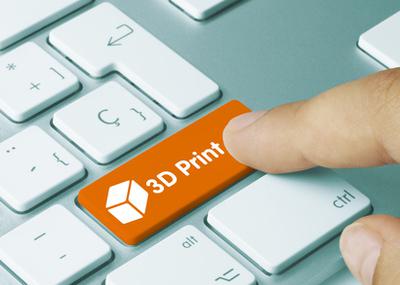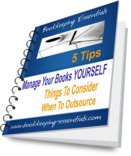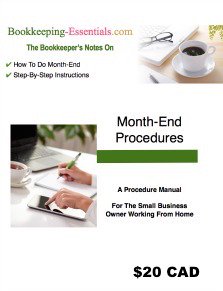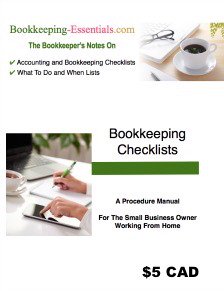Converting Inventory to Supplies Expense or Fixed Asset
by Donna
(Ontario)

How do you remove items from inventory for use in the business?
I recently opened a 3D Printing business - home based.
There are 3 components to my business:
- selling of 3D Printing products,
- 3D Printing services (where I 3D print the item for the customer); and
- workshops/consultations.
I have purchased a variety of items (for example, filament spools) from a vendor, mainly for the purpose of reselling. When I received the invoice for the purchase order of such items, I have been entering the following:
A debit to Inventory - asset account
A credit to Accounts Payable - liability account
As I sell these items to a third party (customer), I record the following:
A debit to Accounts Receivable - asset account
A credit to Sales - revenue account
I also record the following:
A debit to COGS - expense account
A credit to Inventory - asset account.
I have two questions:
1) What journal entries are required if I need to convert an item, originally classified as inventory, into a business supply. (For example, a spool of filament - which is used as part of my printing service but also as part of my educational workshops and demos.)
2) What journal entries are required if I need to convert an item, originally classified as inventory, into a fixed asset (for example taking a 3d printer originally intended for resale and transferred for use in my 3d printing service or as a demo unit.)
Is it sufficient to record such a transfer simply by crediting the inventory asset account (by the cost at which I purchased it) and then either debiting the supplies expense or fixed asset account...or is there any end of year/tax reporting implications and/or further journal entries that need to be considered when performing such a conversion?
I have been searching the internet high and low for help with this but have not found anything useful. I have found your website to be very helpful in the past when I was learning about GST/HST, and am therefore hoping that you might be able to provide me with some guidance on this topic as well. My accounting knowledge goes back to OAC Accounting in Highschool...but that was over 20 years ago! Any guidance you can provide would be truly appreciated!

Hey Donna,
I touched on this elsewhere on the site when I chatted about periodic inventory and year-end journal entries.
Converting Inventory for Demonstration Use
Demonstration samples and course demos should be recorded when they occur, just like a regular sale, so that your year-end inventory counts are not out. If you are using QuickBooks:
(1) Setup a non-inventory item for this pre-coded to Demonstrations.
(2) Then use a Sales Receipts form to enter the transaction.
(3) Set the sales price to $0. This will remove it from inventory without creating sales revenue and also remove it from inventory at cost. QuickBooks uses weighted average while QBO using FIFO.
The entry should book just like your normal sales but Demonstrations, instead of COGS, is debited. To make sure you did it correctly, after you complete the Sales Receipt, do a "Ctrl + Y" to display the journal entry made in QuickBooks. For QBO, click on More at the bottom of the screen then click on Transaction Journal.
Converting Inventory for Printing Supplies Use
You could also charge demos to Supplies expense as you suggested ... but if the amount is material, you might want to track it. Having a separate account or sub account would make it a little easier to budget, manage and control the expense.
Any item in inventory used in the business for 3D printing should also be expensed to Supplies rather than COGS as you suggested.
Converting Inventory to a Fixed Asset
Follow the same procedure for business use of inventory for 3D printing. The non-inventory item would be Equipment Purchased by Business or some other descriptor and pre-coded to Equipment-3D Printers.
If any inventory is ever used for personal use or consumption, then code that to Owner's Draw (or Shareholder's Loans for corporations).
I agree with you that the items removed from inventory for use in the business are removed at cost. Using a Sales Receipt form in QuickBooks rather than the Journal Entry form ensures the inventory is removed at the appropriate cost.
Year-End
Keep an eye out while doing your inventory count at yearend ... for inventory items that are obsolete and/or broken. Your entry for an inventory adjustment for obsolescence would be:
DEBIT an expense account like Shrinkage instead of COGS
CREDIT inventory - asset account
If obsolescence becomes a material amount, you may want to consider doing your inventory account on a quarterly basis rather than an annual basis.
This is how I would approach your entries. Hope this helps Donna.
Comments for Converting Inventory to Supplies Expense or Fixed Asset
|
||
|
||
|
||
|
||
Enjoy A Tea Break With
Me Today. Let's Chat!
Use the search feature to quickly find the
information you're looking for.
Join Me On Facebook
Help support this site by "liking" me! Here's where I post current information.
Listed Under Websites NOT Local Business.
This website is NOT associated with the business operating in Bonnyville AB.



